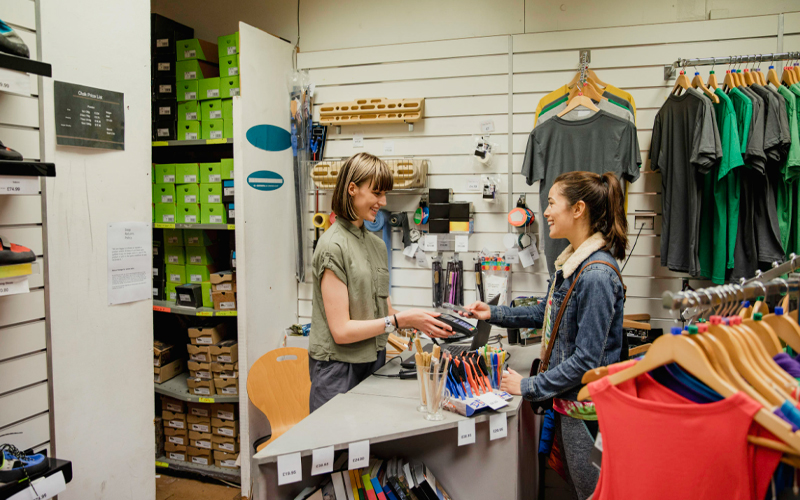Manufacturers are always trying to optimise the methods of getting their products to the market. They aspire to achieve different goals like maximising visibility, brand building, profit boosting, reducing costs, and more. All these goals are dependent on one vital factor – customer experience!
Customer experience depends on several factors such as the quality of the product, how it is packaged, timely delivery, retail placement, and more.
Most manufacturers understand the importance of packaging the product right to engage a buyer. On the fundamental level packaging is done to protect the product from damage. But packaging goes far and beyond protection. It extends the shelf life, boosts a brand, maximises shelf presence, and more.
Packaging is done in three stages, primary, secondary, and tertiary packing. Primary packaging is the first layer of covering that is provided to a product. An example of this is a wrapper that covers a bar of soap. In other words, the primary packaging is directly in contact with the product. Secondary packaging is the way the product is repacked in an external covering for display purposes in a retail outlet or for delivery to an online customer. If we continue with the example of a soap, after the primary packaging is done, three bar soaps may be bundled as one or there may be an offer of “buy 1, get 1 free, etc.” This kind of secondary packaging offered at the retail outlet is done to entice the customer at the point of purchase (POP).
Tertiary packaging is the packing done to transport large volumes of a product.
Traditionally all three stages were completed at the point of manufacturing. However, due to the changing customer demands and a highly competitive market, secondary packaging has received a lot of attention in recent years. This is because secondary packaging directly impacts customer behaviour.
Most manufacturers of today are toying with the idea of cpg outsourcing to contract packaging companies. Contract packaging companies manage the final packaging to make the product retail ready. It has been observed that completing secondary packaging closer to distribution offers better outcomes.
Let’s delve into why secondary packaging should be closer to the customer.
- Customers are attracted to products when they are packed in a way that impresses them. Retailers interact directly with consumers. Hence, when compared to the manufacturer, retailers are in a better position to ascertain how the product must be packaged. If packaging is done closer to the retailer it can be done according to the customer demands.
- Retailers offer products packed in different ways to reach a wider customer base. If different variations of packaging are done upstream, it increases the complexities and cost of the supply chain.
- When secondary packaging is done upstream, the product is packaged in a specific manner that cannot be altered. Secondary packaging that is done closer to the consumer is more flexible. The retailer can analyse the changing customer demands and pack the products so that they are eye-catching.
- If secondary packaging is done at the distributor’s end, manufacturers can focus on the design and production aspects. This helps reduce the time to market and enhance the quality of the product.
- Downstream secondary packaging is ideal for products that have low-profit margins. This is because it greatly reduces operating costs and boosts profits.
- Most contract packaging companies have the infrastructure to support large volumes of packaging. This helps manufacturers scale their business because the secondary packaging companies can easily meet the growing packaging demands.
- By moving the secondary packaging closer to the customer, the manufacturer can defer the packaging and customise it according to the customer's demands at the time of purchase.
- Secondary packaging done at closer to the customer’s end provides agility because the packers can alter the packaging according to sudden changes in demand.
- Some secondary packaging companies offer different packaging options that can be used to test customer response.
- Most secondary packaging companies are aware of the customer demands regarding the type of packing material. For instance, in recent years there has been a lot of emphasis on using biodegradable packing materials. If secondary packaging is done upstream, the manufacturers will have to create storage space for storing different types of packaging materials. On the other hand, the primary business of contract packaging companies is packing, they already have the infrastructure to cater to variations in packaging demands.
In a nutshell, completing the secondary packaging closer to the customer boosts customer experience. This is because the packaging company is closest to the customer and can comprehend the customer's needs. This enables the secondary packaging company to tailor the packaging to meet the customer demands. Customers can get the product how they want it and when they want it. Happy customers not only help boost the brand but also increase the profits.
For organizations on the digital transformation journey, agility is key in responding to a rapidly changing technology and business landscape. Now more than ever, it is crucial to deliver and exceed on organizational expectations with a robust digital mindset backed by innovation. Enabling businesses to sense, learn, respond, and evolve like a living organism, will be imperative for business excellence going forward. A comprehensive, yet modular suite of services is doing exactly that. Equipping organizations with intuitive decision-making automatically at scale, actionable insights based on real-time solutions, anytime/anywhere experience, and in-depth data visibility across functions leading to hyper-productivity, Live Enterprise is building connected organizations that are innovating collaboratively for the future.








